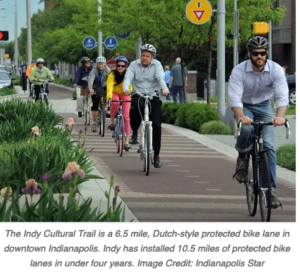By Fran Korten
 City Council members were clapping and cheering at their November 10 council meeting. Their exuberance was in response to unanimously approving Bainbridge Island’s first-ever climate action plan. The plan was presented by Mike Cox, chair of the Climate Change Advisory Committee, which had developed the plan with substantial input from citizens and City staff.
City Council members were clapping and cheering at their November 10 council meeting. Their exuberance was in response to unanimously approving Bainbridge Island’s first-ever climate action plan. The plan was presented by Mike Cox, chair of the Climate Change Advisory Committee, which had developed the plan with substantial input from citizens and City staff.
The plan contains more than 170 recommendations for action in six sectors. The overall goals are to reduce Bainbridge Island’s greenhouse gas emissions by 90 percent by 2045, compared to 2014 levels; prepare the Island for climate impacts; and engage the public in making the changes.
The plan sets ambitious goals for the transportation sector. It targets a 25 percent reduction in Vehicle Miles Traveled per capita by 2030 and a 50 percent reduction by 2045. It aims for biking, walking, and rolling to comprise 25 percent of all trips by 2030 and 50 percent of all trips by 2045.
To reach such goals, our city will need to create pathways that significantly lower the levels of stress that bikers and walkers experience on our streets. That’s why a subgroup of the City’s Sustainable Transportation Task Force, composed of Bainbridge GreenWays members Susan Loftus, Kim Leatham, Barb Zimmer, and Alyse Nelson, spent many hours in late November ground-truthing an Island map that shows the level of traffic stress on most of our roads.
That map, which City staff and the Nelson\Nygaard transportation consultants are still revising, will signal where the City needs to make improvements so that the majority of people feel safe enough to ditch their cars to make their Island trips. Such road improvements, along with potential off-road paths, can guide the City’s infrastructure plans for years to come as we work to fulfill the climate action goals and join other cities in making biking and walking safe for everyone.
